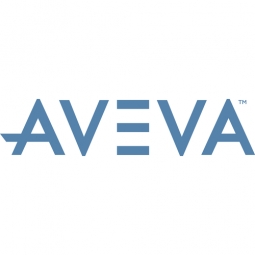Customer Company Size
Large Corporate
Region
- America
Country
- United States
Product
- Avantis.PRO EAM
- Avantis.DSS
Tech Stack
- IBM System/36
- IBM AS400
- Windows-based system
Implementation Scale
- Enterprise-wide Deployment
Impact Metrics
- Cost Savings
- Productivity Improvements
Technology Category
- Functional Applications - Enterprise Asset Management Systems (EAM)
- Analytics & Modeling - Real Time Analytics
Applicable Industries
- Chemicals
Applicable Functions
- Maintenance
Use Cases
- Predictive Maintenance
- Asset Lifecycle Management
Services
- System Integration
About The Customer
CF Industries, Inc. is one of the largest manufacturers and distributors of nitrogen and phosphate fertilizer products in North America. Its operations are organized into two business segments: the nitrogen fertilizer business and the phosphate fertilizer business. Principal products in the nitrogen fertilizer business are ammonia, urea, and urea ammonium nitrate solution, or UAN. Principal products in the phosphate fertilizer business are diammonium phosphate (DAP), and monoammonium phosphate (MAP). The company recognized early on that structured maintenance could have a significant, positive impact on both operational reliability and its bottom line. In the 1980s, CF Industries developed a powerful maintenance planning and tracking application on IBM System/36 computers and gradually migrated the application to the IBM AS400 platform.
The Challenge
CF Industries, one of North America’s largest agricultural fertilizer producers, had been using a homegrown maintenance planning and tracking application developed on IBM System/36 computers and later migrated to the IBM AS400 platform. This system was effective in managing maintenance activities but keeping it in pace with CF Industries’ growing business was proving to be expensive, with investments already well over $1 million. Management reasoned that migration to a Windows-based system would enable them to continue and expand their automation-driven maintenance process improvement, while providing a familiar, easy-to-navigate desktop environment, and a standard, Internet enabled platform on which to build future enhancements.
The Solution
CF Industries set out to find software that would deliver the maintenance planning functionality they had been enjoying in the IBM environment while providing the flexibility they needed for growth. They located the required software in Avantis.PRO Enterprise Asset Management, an enterprise asset management software system. CF Industries has now standardized on the Avantis.PRO Enterprise Asset Management software as its core platform for collection and storage of data on MRO inventory, procurement, and maintenance activities. They also use Avantis.DSS decision support software to analyze this data for continuous process improvement and have supplemented their system through adoption of standard catalog descriptions and categories for all MRO items, completed with the help of catalog management solutions provider I.M.A. Ltd. This system is designed to automate maintenance planning and tracking activities on nearly 50,000 asset entities, including vessels, pumps, rotating equipment, and electrical motors. It also helps manage and analyze MRO inventory and procurement on more than 60,000 inventory items in the four CF Industries manufacturing locations.
Operational Impact
Quantitative Benefit

Case Study missing?
Start adding your own!
Register with your work email and create a new case study profile for your business.
Related Case Studies.

Case Study
Honeywell - Tata Chemicals Improves Data Accessibility with OneWireless
Tata was facing data accessibility challenges in the cement plant control room tapping signals from remote process control areas and other distant locations, including the gas scrubber. Tata needed a wireless solution to extend its control network securely to remote locations that would also provide seamless communication with existing control applications.

Case Study
Advanced Elastomer Systems Upgrades Production
In order to maintain its share of the international market for thermoplastic elastomers AES recently expanded its Florida plant by adding a new production line. While the existing lines were operating satisfactorily using a PROVOX distributed control system with traditional analog I/O, AES wanted advanced technology on the new line for greater economy, efficiency, and reliability. AES officials were anxious to get this line into production to meet incoming orders, but two hurricanes slowed construction.
Case Study
Wireless GPS Tracking & Security Monitoring
Enhancing the security of hazardous freight and ensuring compliance with Homeland Security’s Transportation Security Administration mandate that all trains carrying chemicals capable of creating a toxic inhalation condition are equipped with on-board safety monitoring systems.

Case Study
Field Device Asset Management For Chemical Company in China
Chinese chemical subsidiary of multinational corporation serves customers throughout the world. Sales offices and research and technology centers are strategically located to provide rapid response to customer requests. Just two workers were assigned to maintain thousands of intelligent instruments in three production units, so they could do little more than react to device issues as they appeared. This costly maintenance method inevitably led to unexpected downtime when a critical instrument failed. Plant management recognized the need to change from reactive to predictive maintenance for all assets, including instruments and control valves, but help was needed in implementing such a technology-based initiative.

Case Study
Industrial Workforce Mobility for Improved Safety & Operations
Huntsman Corporation, a global manufacturer and marketer of differentiated chemicals, undertook an aggressive program to eliminate injuries, product defects, and environmental releases at their Port Neches facility. Termed “Project Zero”, this program required a completely mobile solution to empower operations and maintenance personnel to capture defects, track work progress and make process and safety related decisions in real-time.




